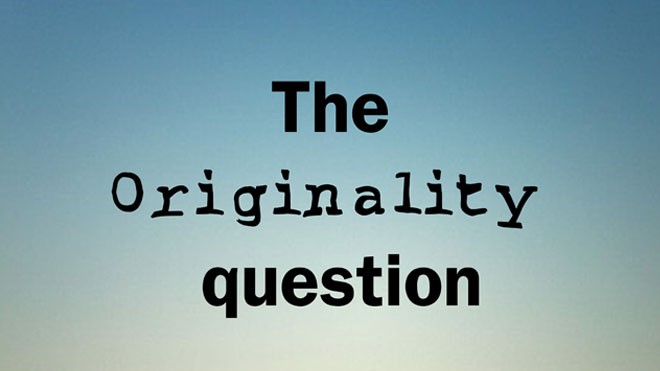
What is originality or do we even need to define it in the first place?

We begin with originality, which we understand is a contested subject. In discussions, originality is often used interchangeably with creativity, excellence, even perfection. In discussion again, lack of originality is supposed to mean lack of creativity and a sense of unease with too much of copying, remixing if not outright plagiarising.
There is a sense of continuity of thought and hence action in everything humans do. All arts as well as knowledge are a part of a process. How do we then define originality, or do we even need to define a concept that is not relevant? Do we think of it in relative terms, may be as something opposed to imitation, even if it’s something distinct from ‘platonic realism’.
Ironic as it may seem that originality is made a subject of journalism, which is mostly about regurgitation, it is still important to locate originality or creativity if you like, in arts.
If all arts draw from their own past, what is it that makes one product or performance stand out and survive as they say the test of time. There is obviously something happening in the mind of the artist first. Perhaps then our sense of loss, especially in the times we live in, is owed to the fact that many art forms increasingly draw on technology.
Has technology taken over the human mind and individual effort already? What about film, which is essentially a medium that is dependent on technology. In film, there is a lot more room for adaptation of literature, making biopics or remakes. There is obviously more discussion on the extent of digression, being unfaithful to the script or the actual lives, leading to the more obvious question -- whether a film is a writer’s or director’s medium?
Read also: The originality question
Ultimately, the man behind the camera takes charge as well as responsibility. And the film as an artwork is judged on how it works as a film, regardless of all other considerations.
Theatre internationally is becoming technology dependent, even though the discussion in this country is still about lack of original scripts. Likewise for visual arts. The installation is made in the artist’s mind first before it is assembled, sometimes seeking technological assistance.
In the times we live in, content may be changing the form of art or there may be other factors. The fact is that we have arts aplenty in place of fewer artists spending their entire lives perfecting their art to the extent that they created something new. Fortunately or unfortunately, the consumer of art today has a lot to choose from, judge and compare. Meanwhile, the connoisseur should be forgiven for thinking that bestselling art is perhaps the new original.